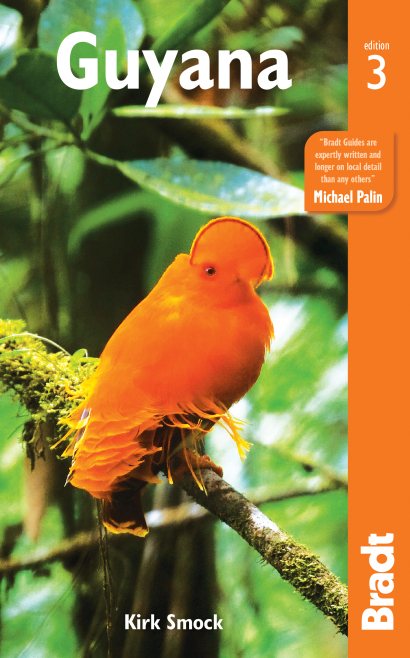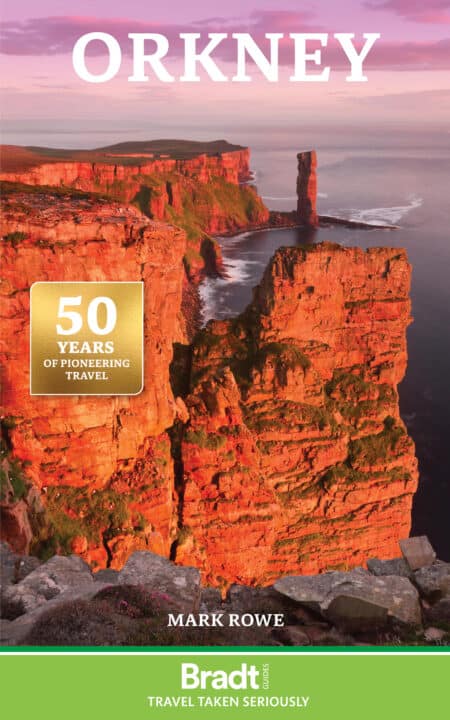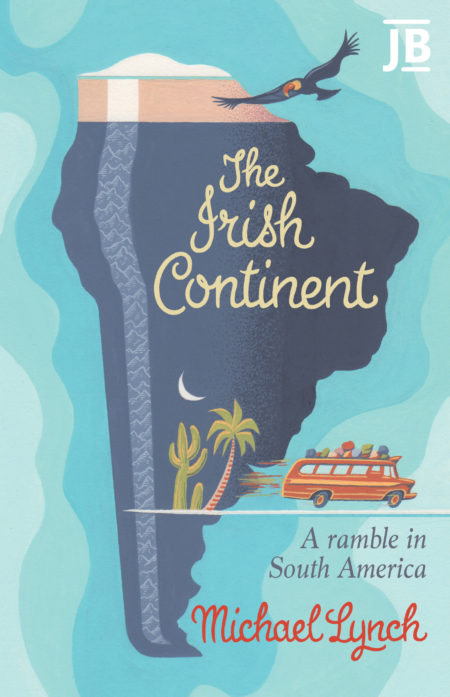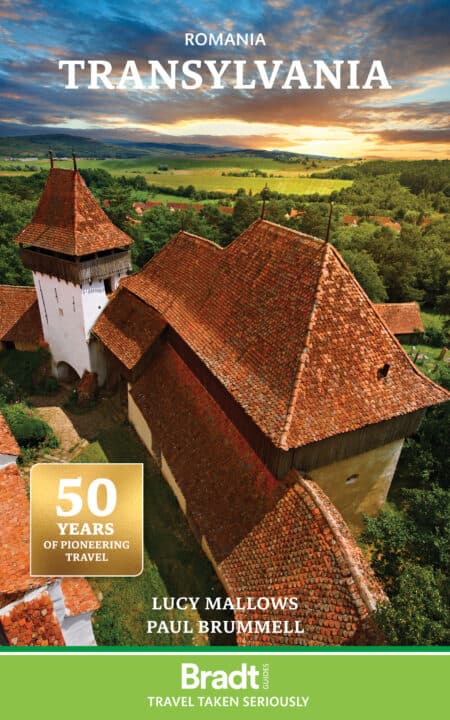Guyana (ebook)
by Kirk Smock
£13.99
Guyana Travel Guide – Travel tips and holiday information on everything from Georgetown hotels, restaurants and highlights to birdwatching, wildlife and rainforest tours. Also covering Kaieteur Falls, Amerindian culture, Rupununi savannah, Surama, Demerara and the coast, Berbice, Essequibo, canoeing, cricket and rum, ecotourism and conservation.
Edition: 3
About this book
This new third edition of Bradt’s Guyana remains the only guidebook available to this South American gem, a jungle-clad country teeming with exotic wildlife. Thoroughly researched, easy to use and interesting to read, Bradt’s Guyana is written and updated by writers who have lived in and promoted Guyana for many years and is an ideal companion for all travellers, from wildlife watchers to fishermen, anthropologists to conservationists and ‘voluntourists’.
Guyana is a destination on the rise, described – justifiably – by the tourist board as ‘South America Undiscovered’. This new edition of Bradt’s Guyana has been updated to include all the latest developments, ranging from how to see harpy eagles at Warapoka to new culinary experiences, local tour operators, 4×4 self-drive and new hotels.
Truly off the beaten track, Guyana is one of the most fascinating and least-known countries in the Americas. It is also the only English-speaking country in South America. The jewel in its crown is the mouth-droppingly beautiful Kaieteur Falls, which is nearly five times the height of Niagara and the world’s tallest single-drop waterfall.
Culturally Caribbean, its capital Georgetown is a curious melting-pot of quaint Dutch and British colonial architecture, steel drums, boisterous nightlife, rum shops with world-class rum, cricket and tropical sea breezes. It is also the gateway to the lush interior which is full to the brim with fascinating flora and fauna including monkeys, black caiman, harpy eagles, giant anteaters, otters and the mighty jaguar. With Bradt’s Guyana, discover all of this, plus where to stay in community lodges and see the rainforest through the eyes of Amerindian guides, where to watch turtles nesting on the beach, how to explore the moody Essequibo river (the largest between the Orinoco and the Amazon), and how to visit the million-acre rainforest reserve of Iwokrama for the ultimate authentic wildlife experience.
This third edition of Bradt’s Guyana is the key book to plan an expedition into its densely forested lush interior, often accessible only by boat or small aircraft, before taking some ‘time to lime’ in a hammock in one of its tropical waterfront resorts.
Before ordering ebooks from us, please check out our ebook information.
About the Author
Kirk Smock (www.kirksmock.com) is a freelance writer and tourism consultant from the US. He lived in Guyana with his wife for 2½ years while she fulfilled a public health fellowship in Georgetown. Since Kirk left Guyana in late 2007, he has remained actively involved with tourism development in the country while working on the Guyana Sustainable Tourism Initiative, a USAID-funded project. Kirk currently lives in Baltimore with his wife, their son and two cats – one of which is Guyanese. His work has appeared in several publications.
This edition has been updated by Claire Antell, a Latin American travel specialist who has promoted South America for many years as a tour operator, UK representative, marketing consultant, freelance writer and Executive Secretary of the Latin American Travel Association. Claire fell in love with Guyana in 2004 when she first visited the country on a familiarisation trip and realised she was in one of the continent’s last frontiers for tourism where the mouth-droppingly beautiful Kaieteur Falls is still a well-kept secret and the rainforests, savannah and local Amerindian villages offer some of the most authentic and pristine experiences in the Americas. Since then she has returned every year to Guyana to explore and promote it to intrepid travellers around the world and has represented the destination in major consumer and travel events around the world.
Reviews
‘Going where others fear to read (or publish).’
The Sunday Times
‘I’m just back from a Sustainable Tourism Conference media trip to Guyana and thought you’d like to know that the Bradt guide to Guyana was very much praised throughout the trip. It was absolutely brilliant!’
Carol Hay, Director of marketing UK & Europe, Caribbean Tourism Organisation
Additional Information
Table of ContentsIntroduction
PART ONE GENERAL INFORMATION
Chapter 1 Background Information
Geography, Climate, History, Government, Politics, Economy, People, Language, Religion, Education, Culture, Festivals, Sport
Chapter 2 Natural History
Flora, Mammals, Reptiles, amphibians and invertebrates, Birds, Marine life
Chapter 3 Practical Information
When to visit, Highlights, Suggested itineraries, Tour operators, Tourist information, Red tape, Embassies and consulates, Getting there and away, Health, Safety, Women travellers, LGBT travellers, Travellers with a disability, Travelling with children, What to take, Money, Getting around, Accommodation, Eating and drinking, Public holidays, Shopping, Arts and entertainment, Media and communications, Business hours, Travelling positively
PART TWO THE GUIDE
Chapter 4 Georgetown
History, Getting there and away, Orientation, Getting around, Where to stay, Where to eat and drink, Entertainment and nightlife, Shopping, Other practicalities, What to see and do
Chapter 5 Around Georgetown
South of Georgetown, Demerara: west bank, Demerara: east bank, Demerara: west coast, Demerara: east coast
Chapter 6 Berbice
History, Getting there and away, New Amsterdam, Corriverton, Corentyne River
Chapter 7 Lower Essequibo, Cuyuni and Mazaruni Rivers
Essequibo River, Parika, Bartica, Essequibo River: east bank, Essequibo River: west bank, Mazaruni River, Cuyuni River, Essequibo, Mazaruni and Cuyuni river highlights
Chapter 8 Essequibo and the Northwest
Essequibo, Th e Northwest
Chapter 9 Central Rainforests
Getting there and away, Linden, Rockstone, Morakabai, Pakaraima Mountains, Kaieteur National Park and Kaieteur Falls, Orinduik Falls, Iwokrama, Paraiba Lodge
Chapter 10 The Rupununi
Biodiversity, People, Tourism, The North Rupununi, Lethem, South Rupununi
Appendix Further Information
Index




